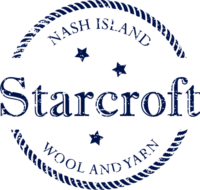Maine has a centuries old tradition of raising sheep on its uninhabited coastal islands. One such island off the coast of Downeast Maine is where the story of Nash Island Wool began over 100 years ago…
NASH ISLAND WOOL
In 1916, Jenny Cirone’s father became lighthouse keeper on Nash Island off the coast of Downeast Maine. Young Jenny started a flock of sheep, and lived on Little Nash Island with her family and flock for 19 years. After the lighthouse was decommissioned, Jenny purchased most of Nash Island, as well as neighboring Big Nash Island and continued to raise sheep on both islands. Moving to the mainland, in sight of her beloved islands, Jenny tended her island flock until she passed away at the age of 92. She entrusted her flock and the islands to her next-door neighbors and close friends, the Wakemans, who continue to tend Jenny’s flock and take care of the islands just the way Jenny always did.
Jenny’s flock of 150 or so sheep are an Island Descendent/Coopworth/Romney mix, a hardy breed well adapted to island life. They graze out in the open, thriving on green island grasses and mineral-rich seaweeds. This island life style produces beautiful soft, clean, ‘fog-washed’ fleeces.
Wild as they are, the sheep prefer the island to themselves, aloofly tolerating seasonal visits from their shepherds. In May the Wakeman family daily check on the ewes as they lamb. In June with the help of family and friends, the sheep are rounded up, the new lambs are checked, the ewes are sheared, and the rams removed to their own island for the summer. In November the sheep are rounded up once again, and the ram lambs come off the island, bound for market. In early December the rams go back with the ewes for breeding, starting the cycle anew.
STARCROFT FIBER MILL
Located in the woods of Downeast Maine, Starcroft Fiber Mill is a mother/daughter yarn studio.
We work with our good friends the Wakemans tending the sheep throughout the year. In early summer, we join them to help shear the sheep. If the weather cooperates, and the sheep are dry, we gather as day breaks for a boat ride to the island, where we round up the flock, and our three local women shearers get to work. While they shear the flock, we skirt through the fleeces removing bits of brambles and seaweed, sort them into grades, and bundle them into large burlap sacks. All of the lambs fleeces are used exclusively in our Nash Island LAMB yarn, while the soft ewe fleeces go into our Nash Island LIGHT, MUCKLEMARL, and TIDE yarns. The longest, softest fleeces are wrapped in sheets and reserved for hand spinners. After a hard day’s work filled with laughter and good food, the sacks of newly shorn fleeces are hauled in lobster boats to the mainland.
Our Bye Brook Farm yarns are a collaboration with longtime family friend, and 3rd generation shepherdess, Michele Bye. She and her flock of Romney sheep call Aroostook County home, and we’re proud to offer skeins of rich, creamy white and warm, soft grey, in the natural shades of her exquisite flock.
At the mill we give the fleeces a second round of skirting before gently hand- washing the wool with biodegradable soap. The cleaned fibers are then hand-fed into a picker (first round of carding) to blend the flock’s fleeces together. The prepared wool is then sent to mills in Aroostook County and Vermont to be spun before returning to Starcroft for hand-dying, skeining and labeling.
With colors inspired by Downeast Maine’s natural coastal beauty, the finished yarns are kettle-dyed by hand in small batches. Our special technique creates subtle variations of color in each skein, where light and dark highlights of a single hue create beautiful shading in even the simplest knitting.
With each step, from fleece to skein, we strive to produce a unique, handcrafted Maine product that helps keep local fiber traditions, from the Coast to the County, alive and thriving.

